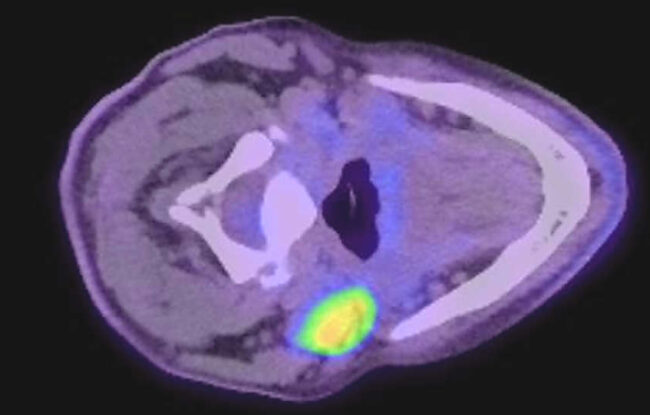HPV doesn’t just cause cervical cancer
High income countries like Australia are facing a human papillomavirus (HPV) related cancer epidemic. It is not cervical cancer and there is no screening process.
On the first International HPV Awareness Day I want people to know that HPV is now responsible for more oropharyngeal cancers than cervical cancers in industrialised nations. Unlike cervical cancer there is no screening process for HPV related oropharyngeal cancers. This means that raising awareness of signs and symptoms is our best option for improving disease outcomes. Cervical cancer advocates have done a great job raising awareness of the relationship between HPV and cervical cancer but there remains a poor understanding among health professionals and the general public about other cancers related to HPV. This is due to four key factors; a domination of HPV discussion by international cervical cancer data which is not relevant to the local health policies of high-income countries, limitations in international cancer registries to classify HPV related cancers, a long delay between HPV infection and development of a malignancy, and the stigma surrounding sexually transmitted infections (STIs).
1. Domination of HPV discussion by international cervical cancer data not necessarily relevant to high-income countries
Internationally cervical cancer is the fourth most frequent cancer in women. It has a distressingly high mortality rate especially in low- and middle-income countries. Around the world one woman dies of cervical cancer every two minutes. In Australia one woman dies of cervical cancer every two thousand minutes. This number is still higher than acceptable but thanks to vaccination, screening, and effective treatment programmes, cervical cancer rates in high-income countries like Australia are declining.
At the same time as cervical cancer rates are declining HPV related oropharyngeal cancer rates in high-income nations are on the rise. In the United States oropharyngeal squamous cell carcinoma is now the most common HPV related cancer. It is understandable that leading health authorities such as the World Health Organization are focusing on improving cervical cancer statistics in low and middle income countries. An unintended by product of the cervical cancer dominated HPV discussion is that it is left to a small number of researchers, medical professionals and patient advocates in high-income countries to try and engage with government and the general public about the HPV related oropharyngeal cancer dilemma on our doorstep.
2. Poor data collection methods lead to under-reporting
When cancer registries were first established they classified cancer according to anatomical site. Cancer registries do not collect data on the presence or absence of HPV in cancer tissue at the time of diagnosis. HPV is linked to virtually all (99%) cervical cancer cases so the distinction between site and type of cancer is not essential to tracking HPV related cervical cancer. For oropharyngeal cancers, however, this distinction is critical, so much so that in 2017 the American Joint Committee on Cancer developed a unique staging system to reflect the very different behaviour of HPV related oropharyngeal cancers. Â The Global Cancer Observatory (GCO) collates cancer statistics for the World Health Organization as part of the GLOBOCAN project. GCO monitors 36 types of cancer in 185 countries but these cancers are only monitored by anatomical site. This results is a fundamental problem of poor data when it comes to compiling international HPV related cancer statistics.
In Australia we have a similar problem. The Australian Institute of Health and Welfare data only classifies head and neck cancers according to site. It is several years old, last updated 2014, and concludes that “the reported proportions of oropharyngeal cancers associated with HPV vary widely from 12% to 63%”. None of this is surprising when you consider that HPV related oropharyngeal cancers have only been recognised in the past fifteen years. It is reasonable to conclude that the incidence of HPV related oropharyngeal cancer has been significantly under reported. At St Vincent’s Sydney 80% of oropharyngeal cancers are HPV related. This is a significant increase on the previous five years.
3. Long delay between infection and cancer development
Many of my patients find it difficult to believe that they can develop an HPV related oropharyngeal cancer years and often decades after being infected with HPV. We do not know the reasons for this delay but it results in many patients wrongly assuming that a long term monogamous relationship (ie minimising recent numbers of sexual partners) has protected them from developing an HPV related infection.
4. The stigma of STIs
The partners of patients with HPV related oropharyngeal cancer often have a lot of questions about how their partner contracted HPV and whether or not they too have been infected. This is perfectly understandable. HPV is the common cold of STIs, four out of five Australians will contract it at one point or another. But for couples in a long term monogamous relationship this can be a thorny topic, not necessarily a priority when dealing with a cancer diagnosis, but a topic that needs to be addressed because STIs are unnecessarily associated with stigma, shame and anxiety. The more people know about HPV the less likely they are to experience these feelings. So let’s get talking and stop HPV being such a secret virus. On International HPV Awareness Day please #AskAboutHPV



